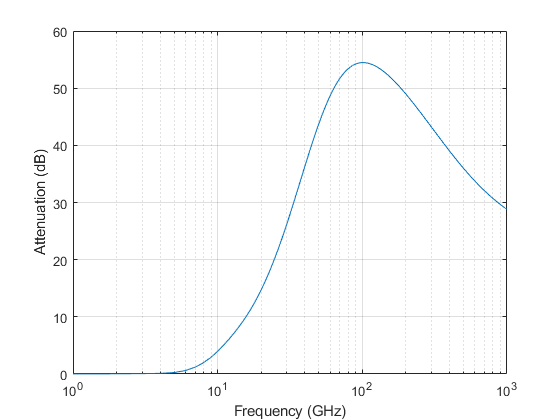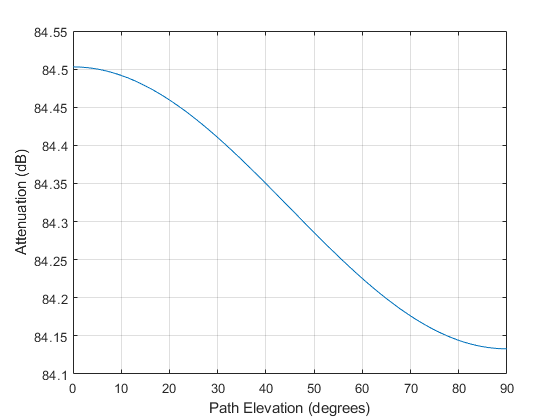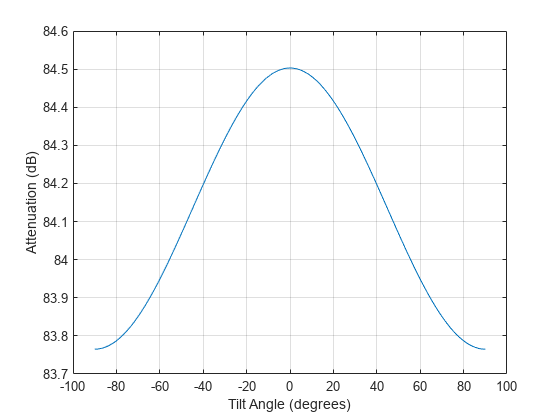rainpl
RF signal attenuation due to rainfall
Syntax
Description
L= rainpl(range,freq,rainrate)L, due to rainfall. In this syntax, attenuation is a function of signal path length,range, signal frequency,freq和降雨率,rainrate。The path elevation angle and polarization tilt angles are assumed to zero.
Therainplfunction applies the International Telecommunication Union (ITU) rainfall attenuation model to calculate path loss of signals propagating in a region of rainfall[1]。当信号路径完全包含在均匀的降雨环境中时,该功能适用。降雨速率沿信号路径不变。衰减模型仅适用于1-1000 GHz的频率。
Examples
Input Arguments
Output Arguments
More About
参考
[1]Radiocommunication Sector of International Telecommunication Union.Recommendation ITU-R P.838-3: Specific attenuation model for rain for use in prediction methods。2005.
[2] Radiocommunication Sector of International Telecommunication Union.建议ITU-R P.530-17:陆地视线系统设计所需的传播数据和预测方法。2017.
[3]Recommendation ITU-R P.837-7: Characteristics of precipitation for propagation modelling
[4] Seybold, J.Introduction to RF Propagation。New York: Wiley & Sons, 2005.



